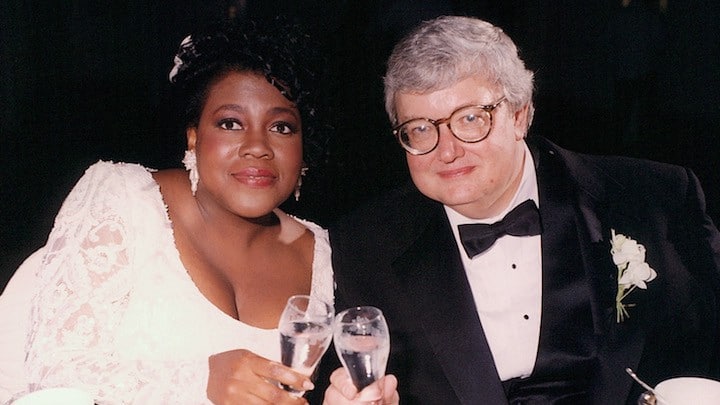While criticisms are ongoing about both the number of women filmmakers in Hollywood and the representation of female characters and issues in fiction movies, documentary has often been championed for its more balanced achievements in both regards. There are indeed more successful women directors in nonfiction and there are indeed more nonfiction films that center on women and women’s issues. But whether that more balance is enough balance has been put into question this week at IDFA (International Documentary Film Festival Amsterdam), where a panel focused on the female gaze in documentary caught my attention.
In their report on the panel, RealScreen quotes Women Make Movies executive director Debra Zimmerman as stating, “I’m tired of people saying that things are better for women documentarians.” She’s right, and it goes with something she stressed to me in 2012 during an interview for the Documentary Channel. “Unfortunately,” she said then, “although there are a lot more women working in documentary than narrative film, we still don’t get to see their films either in festivals or broadcast.” She also had stressed that women tend to make smaller films, and part of that has to do with the fact that men, especially when focusing on male subjects, get more grant money than women, especially those focusing on women subjects.
At the IDFA panel, Zimmerman proposed a new assessment inspired by the Bechdel test for nonfiction films (many of which by nature pass the actual Bechdel test, though it is meant more for written female characters). It’s more of a call, really, for docs to feature 50% women subjects, especially with talking-head-heavy docs where half of the experts ought to be women, and for there to be women’s perspectives represented for all documentary subjects. It’s not difficult, as I observed while watching the new doc Focus on Infinity, which showcased close to as many women scientists as men (which made me think of Neil deGrasse Tyson’s excitement about Interstellar having half its main characters be women scientists). Similarly, Particle Fever has a pretty good representation of women subjects considering CERN apparently has a very significant gender imbalance on the side of men.
How do this year’s best documentaries fare with that Zimmerman test? Life Itself is about a male film critic, but there’s no denying that Chaz Ebert is nearly 50% of its concentration. Citizenfour is by a women, Laura Poitras, and quite significantly involves and is somewhat about her, in a way. For central and exclusive female subjects, there’s Elaine Stritch: Shoot Me, Elena, Sepideh, Maidentrip, Vessel and Lady Valor: The Kristin Beck Story, all of them also made or co-directed by women. Of course, there are definitely more major docs by and about men this year. One of the most popular is even about penises (The Final Member).
As for the larger conversation on the female gaze, I tend to associate this, as some of the panelists did, with filmmakers’ access as much if not more than perspective. Yes, theres’s a certain level of sensitivity seen in the finished product of many women filmmakers (I often wonder how different Tabloid would be if made by a woman), but a lot of that comes through — first and because of — the trust that women seem to be able to get from subjects, particularly women and children (in part through parents). That needn’t just be a woman’s gift, as D.A. Pennebaker (who, yes, often has worked alongside women on site) and other male directors who’ve similarly gotten all up in their subjects’ business, have been able to earn the trust, too.
And look at what Kirby Dick was able to do with The Invisible War, a documentary I’d normally think, admittedly prejudicially, would have needed a woman director — of course, Dick couldn’t have done it, probably, without producer Amy Ziering being the one conducting the interviews with the women who appear talking of being sexually abused or raped while serving in the military.
In my interviews with women directors, I occasionally ask about the benefit of being a woman when making certain films. Many think women opened up to them more easily because they too are women, including Alexandra Berger, director of Danland. But with that particular doc, which is primarily about a male producer and star of amateur porn, Berger’s gender had a twofold impact. “Dan acted very differently with women than men,” she told me two years ago. “Dan definitely saw women as either those he’d just love and adore and shower with everything and change his whole life to be with them, or they were people to be manipulated. I think I was confounding for him because I could see right through him. I could see when he was trying to manipulate me.”
Zimmerman also commented on this idea in my interview with her two years ago. “I’ve also heard from women directors that it is easier to get their subjects to open up,” she said. “Or, they have an easier time in foreign places because they’re underestimated. They’re seen as just a couple of girls.” She also relayed a story from director Pamela Yates of making When the Mountains Tremble in Guatemala and “she was able to get interviews with these generals in the army because they thought, ‘Oh, well she’s just a girl.’ I think it’s interesting that women are able to use that to their advantage, and I think it adds something to the the films they make.”
On the IDFA panel, Barbara Kopple reportedly said something similar of the making of Harlan County U.S.A., that “people talked to me and maybe people told me things they wouldn’t tell a man.” There’s a kind of sexism to Yates and Kopple and I’m certain others’ experience of this sort, and it’s weird to consider something being an “advantage” via sexism the way Zimmerman put it. Not that I think these women necessarily use it to their advantage, just that it turned out being such. Still, disregarding how great the films are that benefited from this, I’d think it better for women for them to be conscious of this and stand up against any sign of it occurring even if that means not getting all that taking advantage of sexism would allow.
Of course, many directors of either gender have noted the similar advantage of subjects simply underestimating filmmakers’ professionalism and the potential of their films — people not worrying about being involved or talking on camera because they figure it’s some amateur production or “just a little documentary.” Should everyone stand up for documentary in general against ignorance or continue to use that to their advantage?
What we should take from the discussion is that even documentary needs a lot of improvement in the quantity and quality of the representation of women on and off screen. It does always appear to be improving, but that may not be the case. There are fewer than 20 significant women documentarians who are always thought of (Kopple, Yates, Poitras, Heidi Ewing & Rachel Grady, Ondi Timoner, Liz Garbus, Kim Longinotto, Jessica Yu, Margaret Brown, Ricki Stern & Annie Sundberg, Lucy Walker, Agnes Varda, Jehane Noujaim and Jennifer Baichwal). That’s not a large group when you realize the number of men. And I continually notice new women documentarians being part of a duo where the other is a man.
I’ll be looking at the feature documentary Oscar shortlist closely to see how many are directed and focused on women. For now, we can see that the Cinema Eye Honors is the top category nominees consist of one-and-a-half out of five that were directed by women. Same for the debut film category. One of five up for best director is a woman. Two of the eight nominated editors. Five of the 12 producers. Four of the 10 cinematographers. None of these, of course, is 50/50. The shorts category, though, features three of five films made by women. Signs are there that it can happen, and that gives hope that it will.

